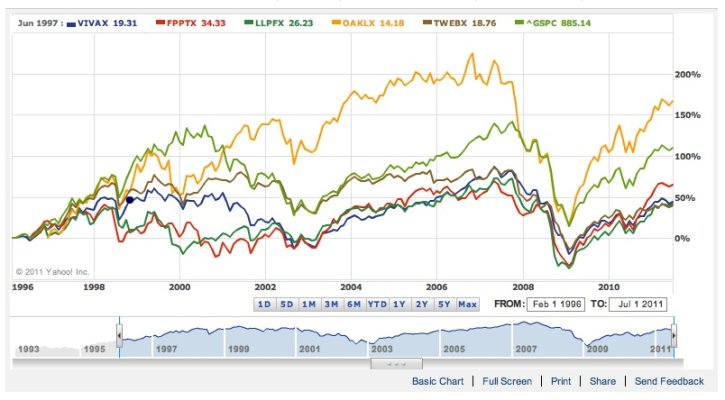kyounge1956
Thinks s/he gets paid by the post
- Joined
- Sep 11, 2008
- Messages
- 2,171
the subtitle is "How Mutual Funds are Betraying Your Trust and What to do About It", and that gives you the book in a nutshell. Much of the information in the early chapters of the book will be old news on E-R: stock mutual funds frequently have high fees and high turnover which drags the fund's return below that of the index. But this author advocates seeking out equity funds that are actively managed on "value investing" principles, and gives advice on how to sort them out from the thousands of more typical stock funds. He gives a nod to indexing—due to low fees and low turnover, an index fund is superior to the typical actively managed equity fund—but in the end asserts that investing in a few selected value funds is better.
The selection criteria suggested by the author are:The bottom line for this author is that, yes, for most investors, indexing provides a low-cost, sensible alternative to walking into the pits of Wall Street. The only winners at that roulette table are the croupiers....Even indexing, however, requires patience (i.e. the average returns of which Bogle writes are available only to those who hang arond long enough to realize the average). The annual redemption rate in th Vanguard 500 Index Fund has averaged 20 percent over the past few years, not much better than the 25 precent rate in stock funds generally. Anyone who trades in and out of an index fund will realize all the pitfalls of market timing and none of the benefits of careful selection. Know who you are. If you are able to use the principles outlined here to find an above average fund, also to be held over a long term, you should see returns greater than you would with an index fund. (italics in original)
- portfolio size (a few dozen stocks rather than a hundred or more)
- low turnover
- track history—performance over the past five and past ten years
- fund managers who "eat their own cooking"—they have significant amounts of money invested in the fund they manage
- experience
- size of the fund (author gives no specific size, but bigger is definitely not better)
- generalist (i.e. not restricted to a single country, size of company, or sector of the economy)
- use of Graham-and-Dodd-style analysis to select stocks held by the fund

